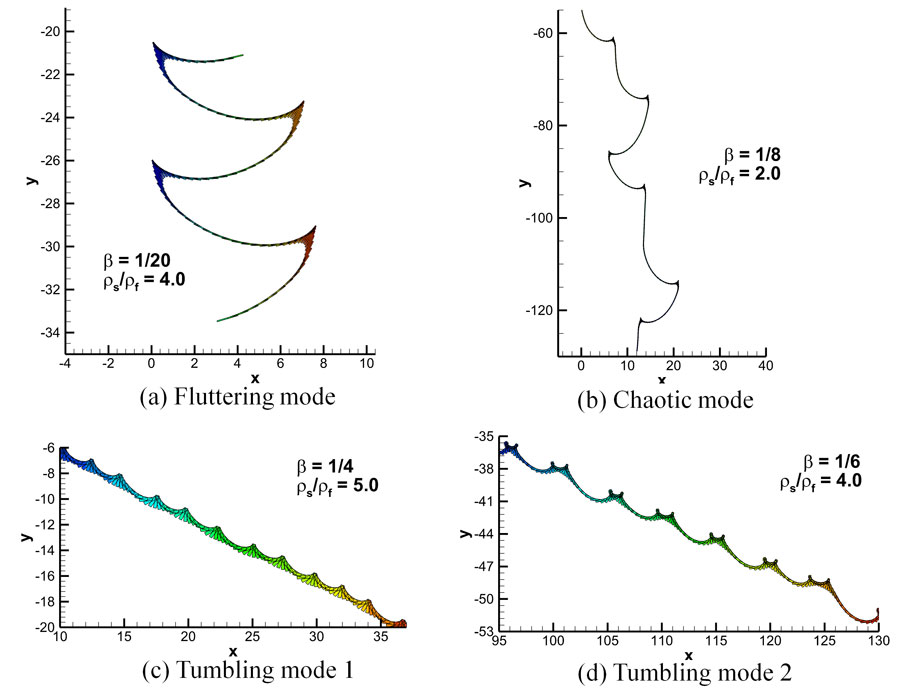A numerical study of free-falling plates within fluids reveals kinematics and fluid mechanics involved in many engineering applications.
From the Journal: Physics of Fluids
WASHINGTON, D.C., October 11, 2016 — By carefully observing scenes as simple as leaves falling from trees or dandelion seeds blowing in the wind, we can see diverse “falling styles” that include tumbling, fluttering or spiraling.
James Clerk Maxwell conducted some of the first documented studies of free-falling objects during the mid-1800s, when the physicist analyzed the tumbling motion of a freely falling plate. But much remains unknown about the phenomena.
Maxwell’s work inspired a team of researchers from National University of Singapore and Nanjing University of Aeronautics and Astronautics in China to conduct a numerical study to explore the patterns made by 2-D rectangular plates falling freely within water. They report their findings this week in Physics of Fluids, from AIP Publishing.
The team’s goal was to view and determine the plates’ regular free-fall patterns, identify the parameters influencing them, and figure out why plates don’t always fall in the same way each time.
“Since we want to track the motion of a falling object, the flow field around the object also needed to be explored,” said Yan Wang, a research scientist working in the College of Engineering at the National University of Singapore. “To do this, we used computational fluid dynamics — a branch of fluid mechanics that uses numerical analysis and algorithms to solve and analyze flow problems on supercomputers.”
In particular, the group tapped a “novel lattice Boltzmann flux solver with immersed boundaries” so they could carry out numerical simulations of the freely falling objects within an infinitely large domain. Another key concept involved in their work is the motion of a rigid body and unsteady aerodynamics.
“This allowed us to study the key parameters that govern the patterns of falling plates and to construct a phase diagram to classify them,” Wang said. “Our most important finding is that the plates’ fluttering frequencies — unstable oscillations — are caused by a linear relationship with the Froude number (a dimensionless number used to indicate how well a particular model works in relation to a real system). And the lift forces on the fluttering plates are linearly dependent on the angle of attack at the cusp-like turning point.” These findings about the force characteristics may help improve the wing designs for unmanned aerial vehicles and to control their motions.

The kinematics and mechanics involved in this phenomenon are relevant to many academic and engineering applications such as unsteady aerodynamics, biomechanics, sedimentology and chemical engineering.
In terms of applications, the group’s work can be used “to build unsteady aerodynamic force models for falling objects or to predict the falling styles of objects,” Wang said. “Our work may also aid in reducing the search areas for belongings lost within bodies of water.”
At this time, “the unsteady aerodynamics of freely falling objects remains far from understood,” he added. “And, although the falling patterns of an object can be predicted, controlling their motion actively or passively will require further studies.”
###
For More Information:
AIP Media Line
media@aip.org
301-209-3090
Article Title
Numerical study on the freely falling plate: effects of density ratio and thickness-to-length ratio
Authors
Y. Wang, C. Shu, C.J. Teo and L. M. Yang
Author Affiliations
National University of Singapore and Nanjing University
